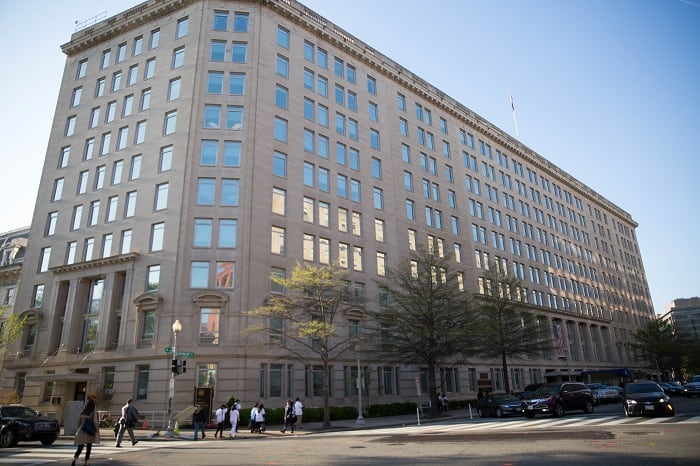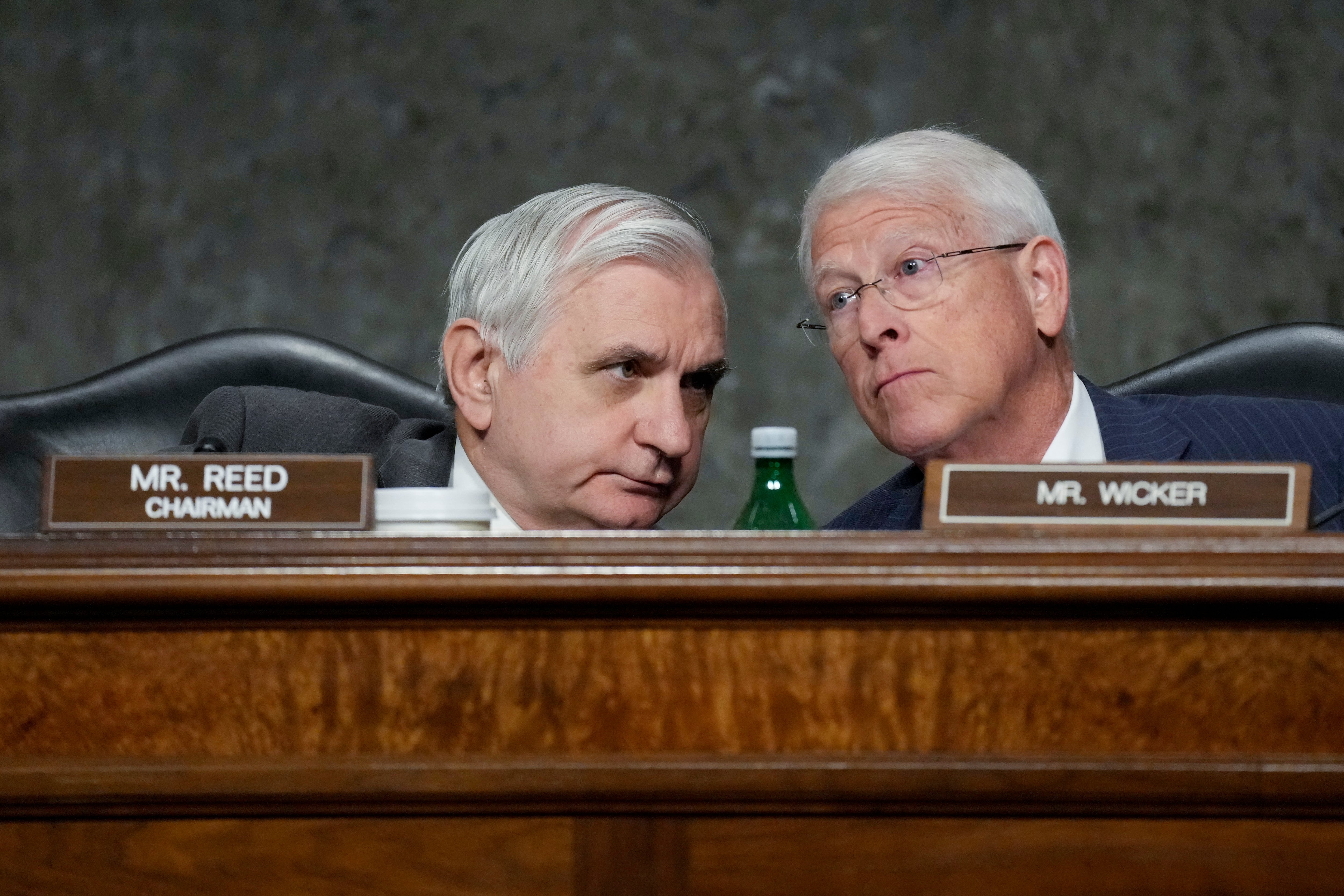SEOUL, South Korea — North Korean leader Kim Jong Un called for more weapons launches targeting the Pacific Ocean to advance his country’s ability to contain Guam, state media said Wednesday, a day after Pyongyang for the first time flew a ballistic missile designed to carry a nuclear payload over Japan.
Tuesday’s aggressive missile launch — likely the longest ever from North Korea — over a close U.S. ally sends a clear message of defiance as Washington and Seoul conduct annual military drills. The Korean Central News Agency said the launch was a “muscle-flexing” countermeasure to the Ulchi Freedom Guardian joint exercises that conclude Thursday. Pyongyang views the drills as invasion rehearsals and often conducts weapons tests and escalates its rhetoric when they are held.
The KCNA report said the missile was an intermediate-range Hwasong-12, which the North first successfully tested in May and threatened to fire into waters near Guam earlier this month.
Kim expressed “great satisfaction” over the launch that he called a “meaningful prelude” to containing Guam and said North Korea would continue to watch the U.S. demeanor before it decides future actions, KCNA said. The U.S. territory is home to key U.S. military bases that North Korea finds threatening.
Kim also said it’s “necessary to positively push forward the work for putting the strategic force on a modern basis by conducting more ballistic rocket launching drills with the Pacific as a target in the future.”
RELATED

The launch seemed designed to show that North Korea can back up a threat to target Guam, if it chooses to do so, while also establishing a potentially dangerous precedent that could see future missiles flying over Japan.
South Korea’s Joint Chiefs of Staff said the missile traveled around 2,700 kilometers (1,677 miles) and reached a maximum height of 550 kilometers (341 miles) as it flew over the northern Japanese island of Hokkaido.
President Donald Trump said North Korea had signaled its “contempt for its neighbors” and that “all options are on the table” in terms of a U.S. response. Trump said in his statement that “threatening and destabilizing actions only increase the North Korean regime’s isolation in the region and among all nations of the world.”
The U.N. Security Council strongly condemned the launch, which came less than a month after the council imposed its toughest-yet sanctions on North Korea. The statement released after a meeting Tuesday evening in New York doesn’t mention any potential new sanctions but calls for strict implementation of existing ones.
Any new test worries Washington and its allies because it presumably puts North Korea a step closer to its goal of an arsenal of nuclear missiles that can reliably target the United States. Tuesday’s test, however, looks especially aggressive to Washington, Seoul and Tokyo.
North Korea has conducted launches at an unusually fast pace this year — 13 times, Seoul says — and some analysts believe it could have viable long-range nuclear missiles before the end of Trump’s first term in early 2021.
Seoul says that while North Korea has twice before fired rockets it said were carrying satellites over Japan — in 1998 and 2009 — it has never before used a ballistic missile, which is unambiguously designed for military strikes.
North Korea also chose not to fire its most recent missile at a lofted angle, as it did in previous launches to avoid other countries, and Seoul’s spy service said the North launched from an unusual spot: the international airport in its capital, Pyongyang. The North still claimed on Wednesday that its recent launch “had no impact on the security of the neighboring countries.”
Some outside observers said launching a road-mobile missile from an airport runway could demonstrate the North’s ability to fire its missiles from anywhere in the country.
The launch is also another rebuke to Trump, who suggested last week that his tough approach to North Korea, which included threats to unleash “fire and fury,” meant Kim “is starting to respect us.”
Tuesday’s missile landed nowhere near Guam, but firing a Hwasong-12 so soon after the threat may be a way for North Korea to show it could follow through if it chose to do so. Guam is 3,400 kilometers (2,110 miles) away from North Korea, but South Korea’s military said the North may have fired the missile at a shorter range.
Guam’s civil defense office said the missile was determined to not be a threat. Residents said they were not worried, for now. Eddie Cruz, 60, said he is concerned that with each missile launch, North Korea is getting better. “They’re practicing, and that’s exactly what I’m worried about,” he said.
North Korea will no doubt be watching the world’s reaction to see if it can use the same flight path for future launches.
Japanese officials made their usual strongly worded condemnations of the launch.
“We will do our utmost to protect people’s lives,” Prime Minister Shinzo Abe said. “This reckless act of launching a missile that flies over our country is an unprecedented, serious and important threat.”
Tokyo said there was no reported damage from the missile. Residents on Hokkaido were warned by loudspeakers, phone alerts and an email that told them to stay indoors.
RELATED

The launch was also condemned by U.N. Secretary-General Antonio Guterres, Britain, France, Germany, Russia, and a number of other countries.
Tuesday’s launch came days after North Korea fired what was assessed as three short-range ballistic missiles into the sea, and a month after its second test of an intercontinental ballistic missile, which analysts say could reach deep into the U.S. mainland when perfected.
In an unusual move, the South Korean military released videos of missile tests it conducted last week. They showed two types of new missiles with ranges of 800 kilometers (500 miles) and 500 kilometers (310 miles) being fired from truck-mounted launchers.
South Korea’s Agency for Defense Development said the launches represented the last flight test for the longer-range missile before it is operationally deployed. Such missiles, which would be the latest additions to South Korea’s Hyumoo family of missiles, are considered key components of the so-called “kill chain” pre-emptive strike capability that South Korea is pursuing to counter North Korea’s nuclear and missile threat.
South Korea also said its air force conducted a live-fire drill involving four F-15 fighter jets dropping eight MK-84 bombs that accurately hit targets at a military field near the country’s eastern coast. Yoon Young-chan, chief press secretary of South Korean President Moon Jae-in, said the exercise was conducted after Moon directed the military to “display a strong capability to punish” North Korea if need be.
Associated Press writers Yuri Kageyama in Tokyo, Jennifer Peltz at the United Nations and Grace Garces Bordallo in Hagatna, Guam, contributed to this report.





